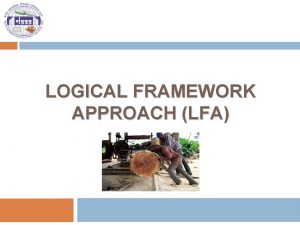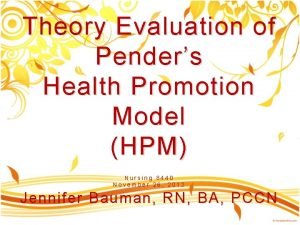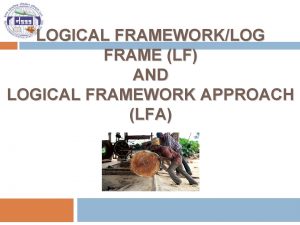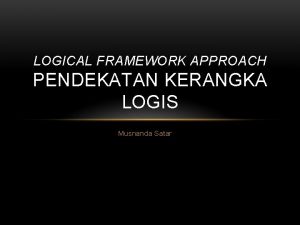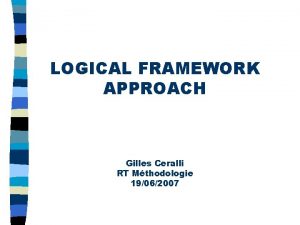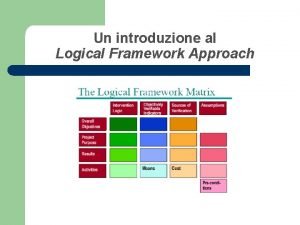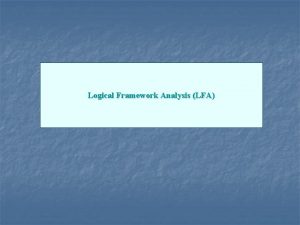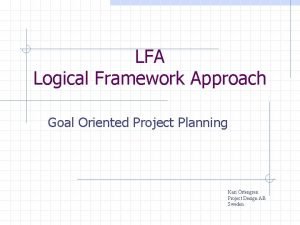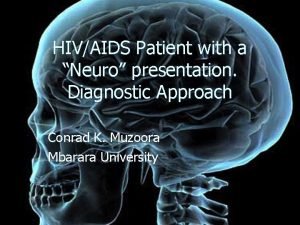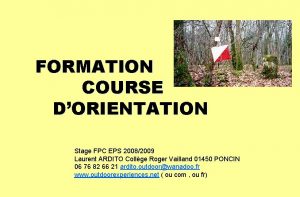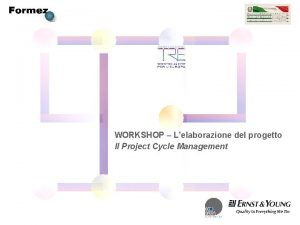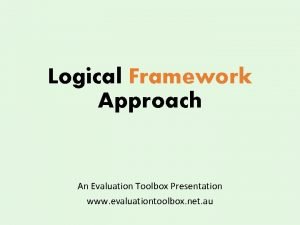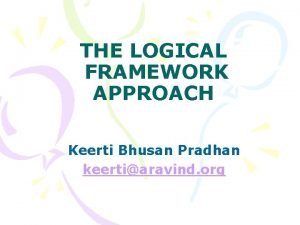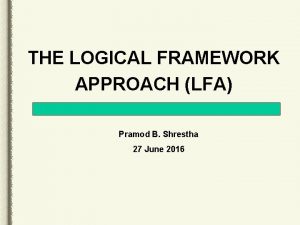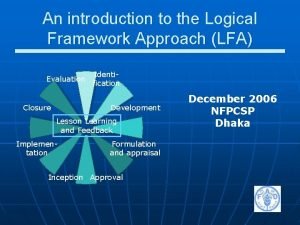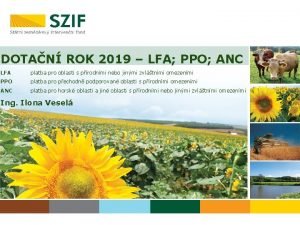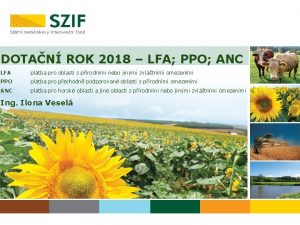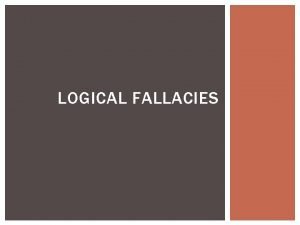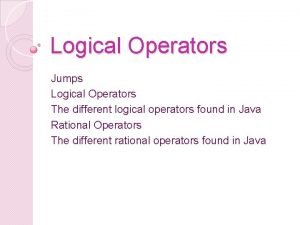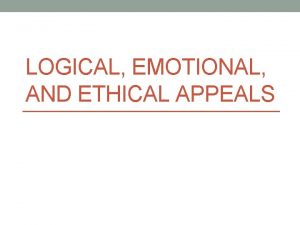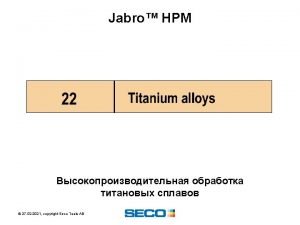Orientation on Logical Framework Approach LFA HPM course



















- Slides: 19

Orientation on Logical Framework Approach (LFA) HPM course March 2010 IMCH, Uppsala University Amal Omer-Salim 1

The principle One basic idea in the LFA method is that one should NOT start talking about what one wants to do (the activities) but about the problem that needs to be solved and about what one wants to achieve (the objectives) 2

LFA Key Steps 1. 2. 3. 4. 5. 6. 7. 8. 9. Context analysis Stakeholder Analysis Problem Analysis Objective Analysis Plan of activities Resource/inputs planning Indicators/measurment of objectives Analysis of assumptions and risks Risk analysis and management 3

Step 1 - Context analysis Ø Project background Ø Environment/external forces Ø Conduct study /situational analysis Ø SWOT analysis Ø Involve local stakeholders 4

Step 2 - Stakeholder Analysis Stakeholder is any l individual Ø Interest l group Ø Influence l organization Ø Affected l community 5

Stakeholders Four main groups: Beneficiaries/targ et group 2. Implementers 3. Decision-makers 4. Donors 1. May be overlap Ø Need all their inputs Ø Should be done locally Ø Planning workshop Ø 6

SWOT Analysis Ø Strengths l Ø Weaknesses l Ø the negative internal attributes of the organisation Opportunities l Ø the positive internal attributes of the organisation external factors which could improve the organisation’s prospects Threats l external factors which could undermine the organisation’s prospects 7

Step 3 - Problem Tree Analysis Purpose: - to identify major problems (focal problem) and their main causal relationships 8

Problem Tree EFFECT CAUSE 9

Step 4 - Objectives analysis Ø Goal/Aim/overall objective/impact: l l l Ø Purpose/project objective/outcome : l l Ø Describe impact of project Beyond the reach of the project Project contributes to the goal Describes why project is taking place Consistency with focal problem Need to be SMART (specific, measurable, acceptable, realistic and time bound) Outcome/s at the end of project lifetime Outputs/specific objectives l l Describe project deliverables (services or products) Actual tangible results of project activities Several activities may be needed to achieve one result SMART 10

Objectives Tree * Ends * Project Cycle Management Guide, 2004 Means 11

The relationship between the problem tree and the objective tree Problem tree Objective tree Ø Effects Overall objectives Ø Focal problem Project Purpose Ø Causes Outputs 12

Step 5 - Activities Ø The means to achieve the goals, NOT the goals themselves! Ø Work done by implementers 13

Step 6 - Plan of resources/inputs Ø Technical expertise l l local foreign Ø Equipment/spare parts/training on use of equipment Ø Premises Ø Funds (budget) Ø Time 14

Step 7 - Indicators measure the extent to which the results are achieved Ø As a basis for monitoring and evaluation (M&E) Ø Several dimensions of indicators: Ø l l l Quantity Quality Behavioural (target group) Time Location Ø Direct and Indirect (proxy) indicators Ø Need several SMART indicators for each level of results 15

Means of Verification Ø Tools or means to obtain the information required by the indicators Ø Include: l l project documents/reports field verification/photos/items ad-hoc studies pre-post tests 16

Step 8/9 - Assumptions and risks Ø Assumptions describe necessary internal and external conditions Ø Are usually worded positively Ø Assumptions can also be risks Ø Risk assessment Ø l monitor l high/medium/low risk Risk management l monitor l delay l counteract/re-design (activity level) l Abandon (killer assumption) 17

Diagonal Logic 18

Exercise Focal problem: High frequency of traffic accidents involving cyclists during winter months in Uppsala Your task is to design a project to address this problem using LFA! 19
 Logical framework approach
Logical framework approach Lfa approach
Lfa approach Penders health promotion model
Penders health promotion model Hit dsm
Hit dsm Logical framework approach
Logical framework approach Contoh logical framework
Contoh logical framework Logical framework approach
Logical framework approach Objectively verifiable indicators
Objectively verifiable indicators Lfa format
Lfa format Mark barber dentist
Mark barber dentist Goal oriented project planning
Goal oriented project planning Ldp lsp
Ldp lsp Crag lfa
Crag lfa Logically equivalent statements
Logically equivalent statements Kesetaraan logis adalah
Kesetaraan logis adalah Ethnocentric orientation and polycentric orientation
Ethnocentric orientation and polycentric orientation Traitement didactique course d'orientation
Traitement didactique course d'orientation Quadro logico esempio
Quadro logico esempio Logical framework matrix
Logical framework matrix Internal logical framework
Internal logical framework

